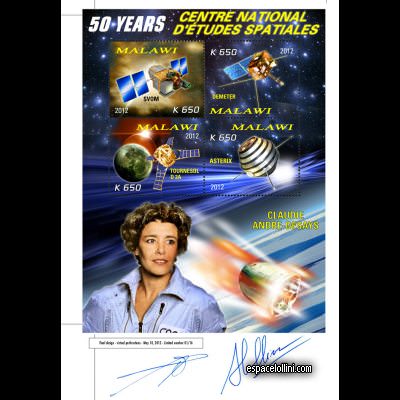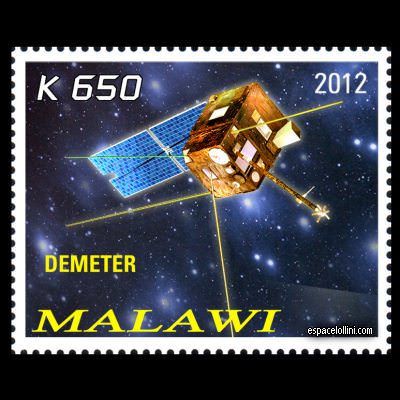Demeter, on orbit configuration (image by CNES)
DEMETERは地震電磁気観測と地球電磁環境観測を目的としたフランス宇宙研究センター(CNES)の小型衛星プロジェクトで、2004年6月29日に打上げられ、マグニチュード4.8以上の地震9000回との統計解析の結果、夜間の地震前4時間以内にVLF帯電波強度が顕著に減少すること報告しています(Nemec et al., 2008)。DEMETERは2010年末に運用を終了しました。
Where is She Now?
View from Satellite
12/2010 DEMETER last scientific commands
The final science commands established by the science ground segment at LPC2E (Chemistry and Physics of the Environment and Space Laboratory) was recieved on board Demeter at 9:03 on 7/12/2010. This command brought to a conclusion Demeter's Science Mission on the 9/12/2010. This was an emotional moment for all of the CNES team.
The Demeter mission, the first MYRIADE microsat developped and launched by the CNES, leaves us a rich heritage of six years of data which have allowed scientists to significantly improve our knowledge of the ionosphere and to think up new experiments sur as the Taranis mission. This data will continue to be used in studying the link between ionospheric perturbations and seismic and volcanic activity.
The final satellite operations will begin shortly, including a procedure to burn-up remaining fuel on board and passivation of the satellite.





















